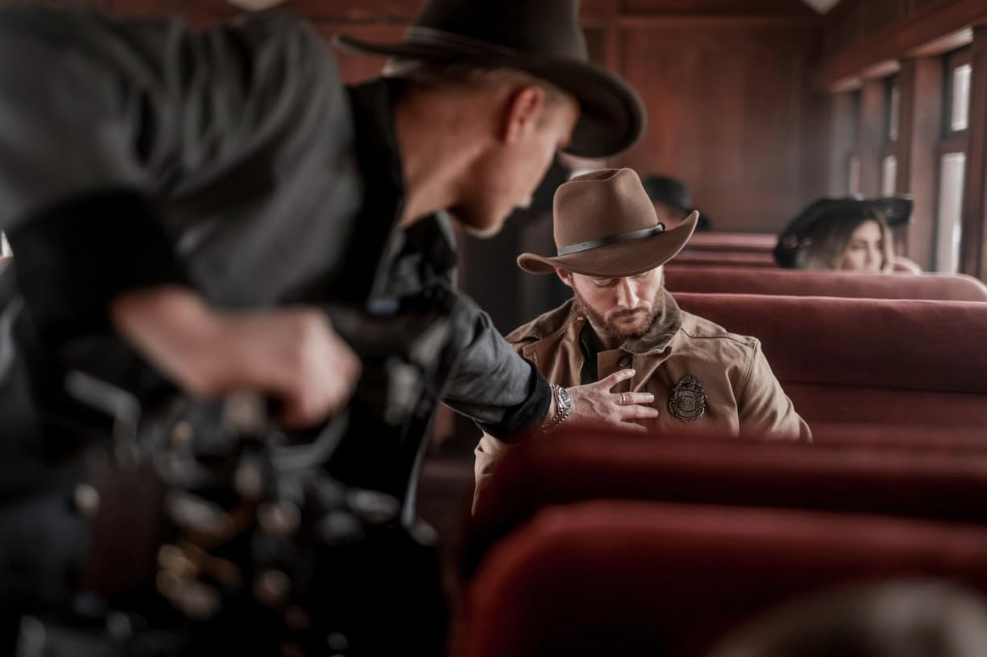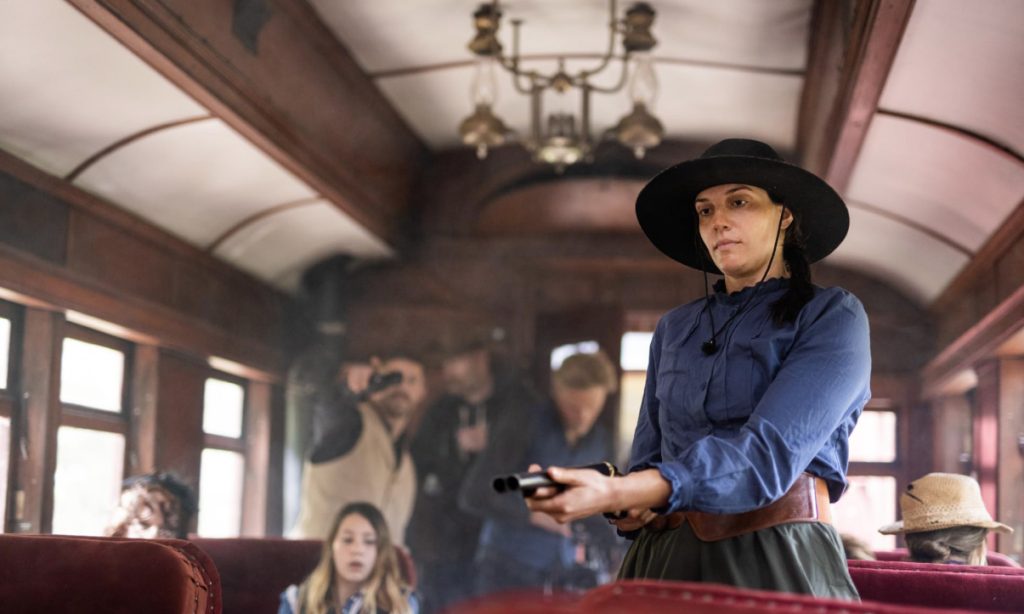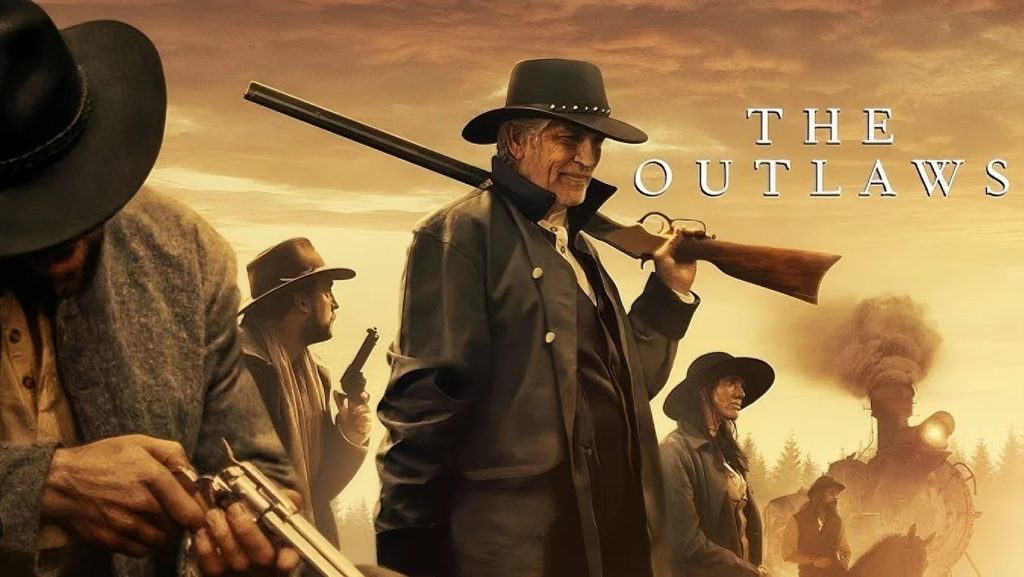The Outlaws (2024)
I. INTRODUCTION
The Outlaws (2024) is a minimalist psychological Western that strips the genre down to its rawest emotional core. Instead of wide-ranging gunfights or heroic standoffs, the film takes place in a narrow, claustrophobic space both literal and emotional—where fear, suspicion, and desperation replace bullets as the deadliest weapons.
With a runtime under 80 minutes, it doesn’t aim for grandeur, but for intensity. This is a chamber piece disguised as a Western: a post-heist narrative where the loot has vanished, the gang is turning on itself, and no one can tell who the real enemy is anymore—not even themselves.
II. PLOT OVERVIEW
The story begins just after a train robbery. A gang of five outlaws awakens in their hideout, only to discover that the stolen treasure is missing. No witnesses, no cops, no shootouts—just a growing paranoia. Who took it? Who’s lying? Who will strike first?
As the film unfolds in real time, the tension escalates without a single outside force. There are no heroes or clear villains here—just five men, trapped with each other and their own fears. They interrogate each other, question motives, recall past grudges, and slowly fall apart under the weight of not knowing who to trust.
One by one, alliances fracture. Words turn into threats, accusations into action, and suspicion into bloodshed. There is no salvation. There is no resolution. There is only survival.
III. CHARACTER STUDY
Rather than offering richly backstoried characters, the film leans into archetypes—but does so with purpose. Each man in the gang represents a fractured piece of a crumbling moral compass: the silent observer, the hothead, the manipulator, the wounded soldier, the wild card.
Their names barely matter. Their identities fade as the pressure rises. What remains are glances, gestures, hesitations, and bursts of violence that speak more than any exposition could.

Importantly, the film refrains from giving us someone to root for. We are placed in the same position as the characters themselves—uncertain who is telling the truth, who might crack next, who might already have blood on their hands.
This ambiguity is the film’s greatest strength, forcing the viewer to reckon not with justice, but with the primal instinct to survive in a lawless world.
IV. THEMES & SYMBOLISM
At its core, The Outlaws explores the breakdown of trust. Without an external enemy or law enforcement looming, the true conflict becomes psychological. Paranoia is the sixth member of the gang—a silent, invisible antagonist that infects every interaction.
The film also examines greed and moral erosion. The absence of the loot becomes symbolic—it doesn’t matter where the money is; what matters is how quickly people are willing to destroy each other for it. The treasure could be anywhere—or nowhere—but its disappearance is the spark that reveals who these men really are beneath the surface.

Violence in the film is portrayed not as spectacle, but as inevitability. There’s no catharsis in the shootouts—only regret and fear. It’s a Western where the most dangerous weapon isn’t the revolver—it’s suspicion.
V. DIRECTION, STYLE & TONE
Visually, the film is stark and contained. Much of the story takes place in one confined location—enhancing the sense of suffocation. The cinematography uses tight framing and low lighting, amplifying claustrophobia and emphasizing the tension between characters.
The sound design is intentionally restrained. There’s little music. What dominates is silence—broken only by shuffling boots, dry breathing, or the click of a trigger being pulled. It’s a film that uses quiet as a weapon.

The action sequences, though brief, are raw and brutal. There are no stylized slow motions or sweeping scores—just fast, blunt encounters that shock rather than entertain. Every gunshot lands with consequence.
VI. STRUCTURE & PACING
At just over 75 minutes, the film moves quickly but doesn’t rush. Every minute builds on the last with mounting dread. Flashbacks are used sparingly and only to highlight moments of doubt or betrayal—never to spoon-feed backstory.
There is no subplot, no romance, no digressions. The Outlaws is lean, direct, and suffocating by design. For some viewers, this lack of breadth may feel limiting—but for others, it enhances the film’s psychological intensity.
VII. FINAL VERDICT
The Outlaws (2024) is not a traditional Western. It’s a pressure-cooker thriller in cowboy boots—where the duels happen across the table, in silence, with fear in the eyes long before guns are drawn.

Its refusal to offer easy answers or likable characters may frustrate some, but for those drawn to stripped-down storytelling, it’s a bold and unflinching ride. In a genre often defined by landscapes and legacy, this film offers something more intimate: a brutal character study on how quickly men become monsters when trust disappears.
It’s not about justice. It’s not even about greed. It’s about what happens to the soul when there’s no one left to believe in.
📊 RATING
| Category | Score |
|---|---|
| Story & Concept | 8 / 10 |
| Characters & Tension | 8.5 / 10 |
| Direction & Tone | 8 / 10 |
| Visual Style | 7.5 / 10 |
| Emotional Impact | 8 / 10 |
| Overall | 8 / 10 |
